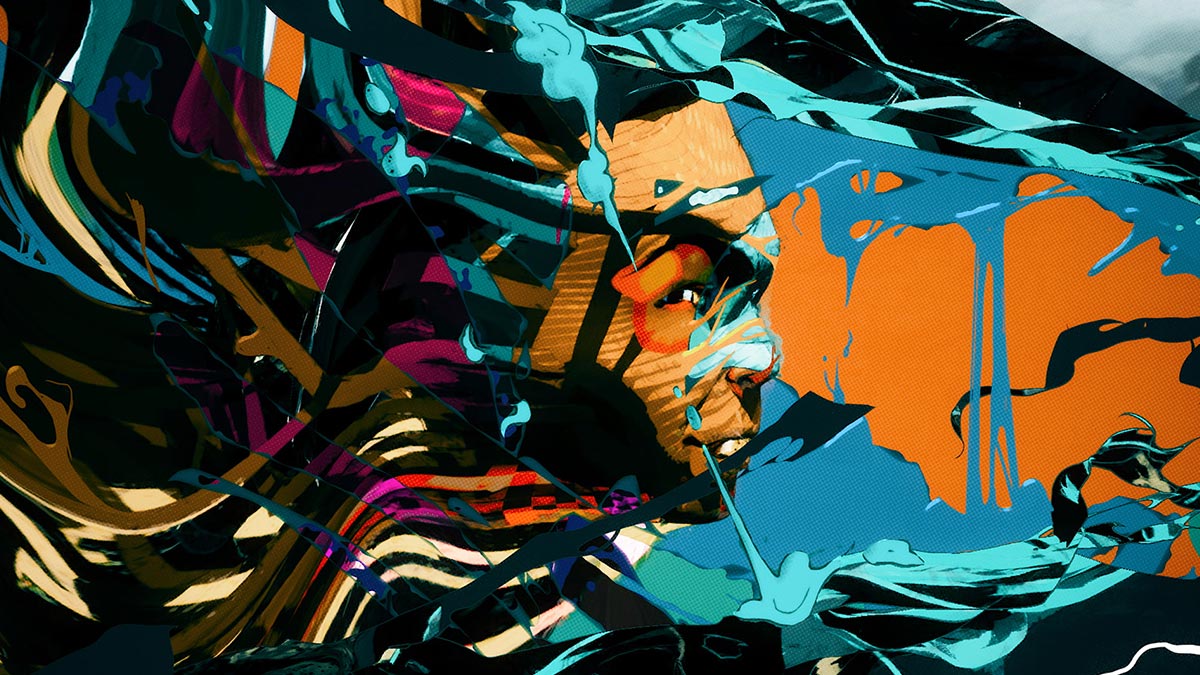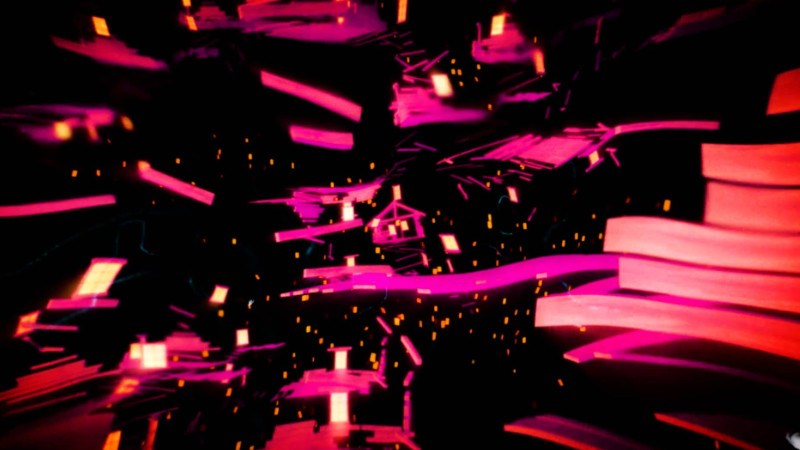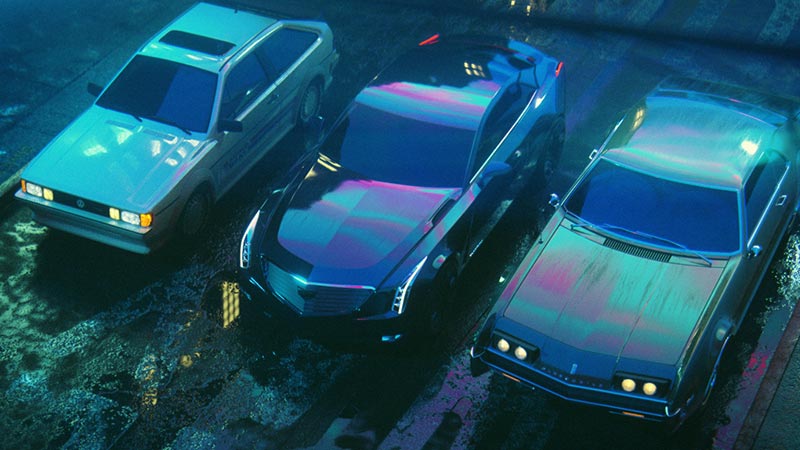GHOSTS is a collection of visions, memories and fragments of what remains of the spectre of Zach Hughes. A psychic echo flickering through time, forever haunting the long-abandoned track.
“GHOSTS,” the mesmerizing animated short film by Kristoffer Brady, delves into a haunting realm of memories, visions, and fragments, embodying the specter of Zach Hughes. With a compelling nod to the original animated short “Hashiru Otoko” by Yoshiaki Kawajiri, this film pays homage to the influential works that shaped Brady’s artistic journey. Inspired by classics like Vampire Hunter D and Ninja Scroll, this project is a heartfelt tribute to Kawajiri-san’s impactful contributions to the world of animation.
Brady’s vision takes audiences on a journey steeped in abstraction and artistry, capturing the enigmatic tale of Racer 37, Zach Hughes, and the downfall of the Death Circus. What emerges is a story layered with intricate nuances, inviting viewers to immerse themselves in their interpretations of Zach’s power and ultimate demise. Through stunning animation and an ethereal narrative, “GHOSTS” navigates the psyche of a character torn between the tranquility of death and an unyielding yearning for victory, creating an atmospheric and visually striking continuum to a tale left open-ended by its predecessor. Stay tuned as we delve into the creative depths of this film in an exclusive interview with Kristoffer Brady, exploring the inspirations, complexities, and artistic choices that shaped this captivating animated endeavor. We asked Kristoffer as we questions on this passionate project, make sure to check it out below.
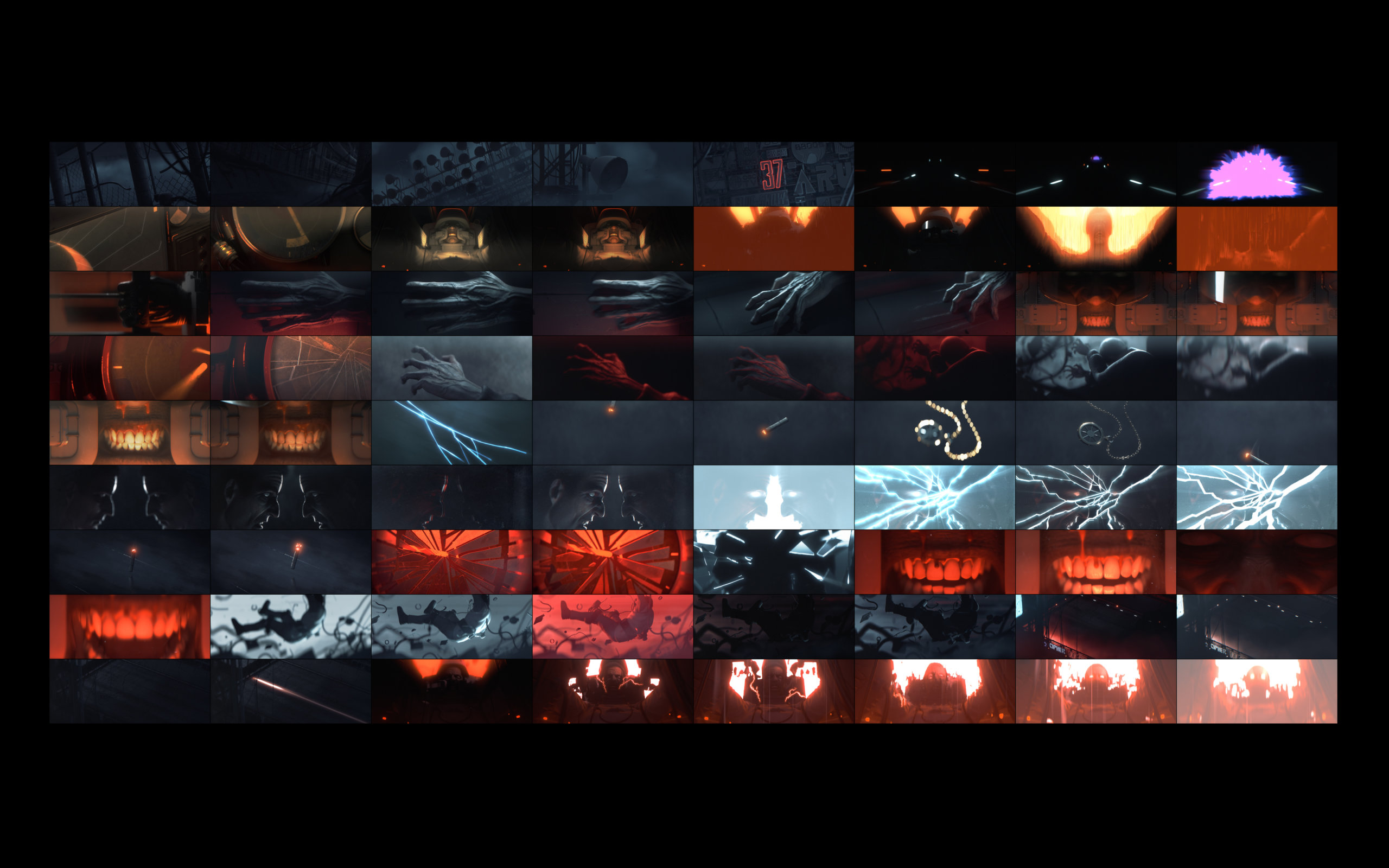
Your film “GHOSTS” pays tribute to Yoshiaki Kawajiri’s “Hashiru Otoko” and explores a continuation of the story of Racer 37 – Zach Hughes. What inspired you to continue this narrative, and how did Kawajiri-san’s work influence your creative vision for this film?
Watching “The Running Man” started a life-long love for Kawajiri-san’s work. Along with creators such as Otomo and Oshii, his work has held a special place for me from a very formative time up to today. His framing, color, and pacing choices have a really distinctive style. Throughout production, two of my main themes were contrast and energy. The goal was to hold every shot to this criteria to match the vividness and style of the original.
Creating this tribute was a natural choice—it was both a piece of art that brought me back to one of my earliest influences and a narrative that I felt had room to be developed further.The original short film by Kawajiri-san is one of the earliest examples of anime I saw when I was young. The animation style, the imagery and design, and the pacing and sheer energy of the work had a huge impact on me. I’ve lived with the original for a long time, and watched it countless times. I didn’t want the short to be a reimagining of the original, but instead a continuation of the story.
“GHOSTS” is described as a collection of visions and memories, evoking a level of abstraction and artistry. How did you approach crafting this abstract narrative, and what themes or messages did you aim to convey through this storytelling style?
The imagery resulted from a mix of moments from the race and his shattered, fragmented former life. Some are more literal, and others more dreamlike. Something that was communicated really well in the original was the visual connection between Zach’s physical being dissolving and his mental state breaking down. I strived to replicate this juxtaposition as much as possible with each frame.
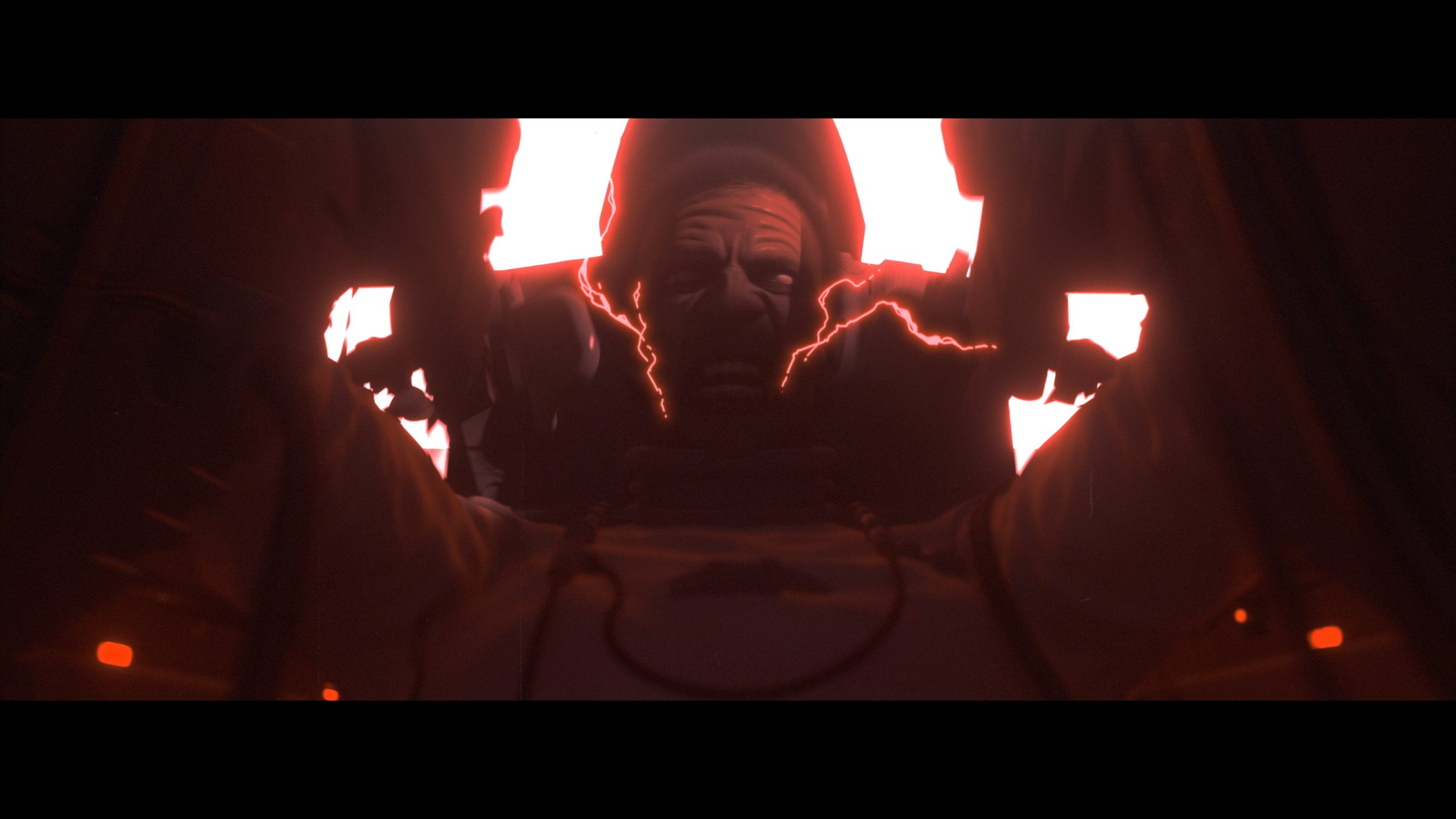
The film explores Zach’s psychic force, which ultimately becomes his downfall. Can you discuss how you depicted this internal struggle and the juxtaposition of power and self-destruction in the narrative?
A lot of the struggle is communicated through the use of color and tone. Starting with a cool blue palette, the shots become warmer and more vivid as we get closer to the final shot, Zach’s disintegration/rebirth. Additionally, the pacing of the shots and the contrast of slow and fast speeds were used throughout the short. The edits become shorter and the camera movements more frantic as we crescendo towards the end.
How did you navigate this open-ended storytelling to allow audiences the freedom to inject their own interpretations into the film, particularly regarding Zach’s power and demise?
The short begins with slow, quiet shots of the Death Circus racing track as it stands today: abandoned and decaying. It was important to communicate to the viewer that there was a merging of two places, the physical track existing in our world, and the psychic void that Zach is forever trapped in. Again, the color choices here are very intentional, contrasting the abandoned tracks cool color palette with the warm palette of Zach’s internal struggle.
In essence, Zach haunts the abandoned track for eternity, his soul’s desire for victory never satisfied. In the original, Zach’s demise is left quite open-ended and it was this premise that excited me about pursuing this homage.

Your film touches on the concept of being torn between death’s slumber and an eternal desire to win. Can you delve into the themes of existentialism and internal conflict explored within Zach’s character?
I imagined that the energy expelled by Zach’s psychic force ultimately traps his life force in an endless cycle of birth, death, rebirth and so on. His sheer will to win is stronger than death itself and his intention forms a void where space and time stand still.
I was really drawn to the premise of someone being betrayed by their own source of power. The thing that gives Zach the ability to succeed is the same thing that is his undoing. I think it’s something we all deal with, especially as creatives; the balancing of ambition and success versus our own well being and ultimately our sanity.
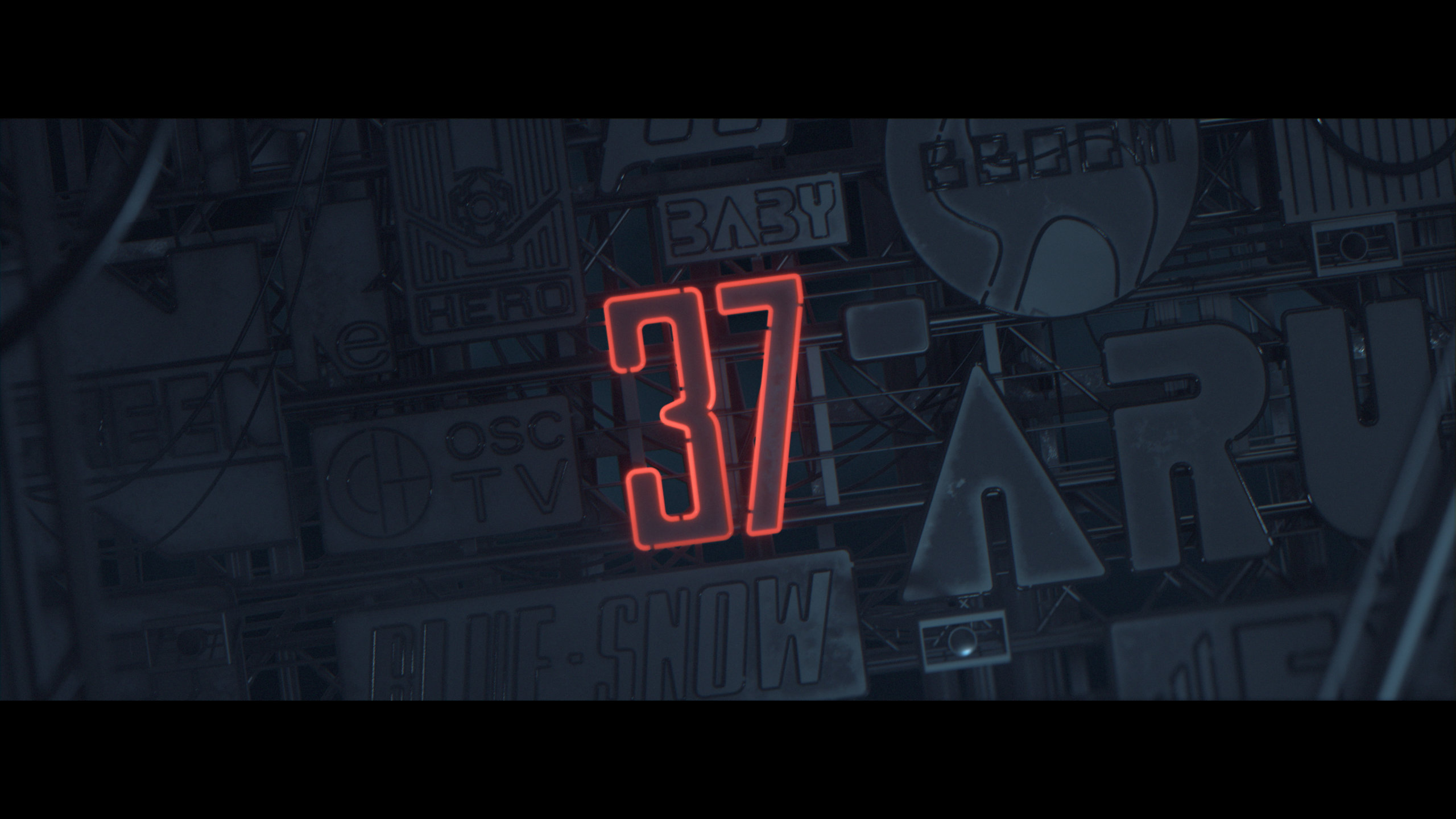
How did you incorporate elements of homage while maintaining a unique voice and vision for “GHOSTS”?
I tried to maintain a blend of shots from the original with new ones I created. Even with the shots that are meant to echo the original, I opted for slightly different compositions and framing, and used techniques to make it feel a bit more cinematic and contemporary. Fans of the original will recognize elements throughout and hopefully appreciate the new interpretations as well.
Another key part of the homage was maintaining a 2D painterly look, without completely removing the 3D medium. Along with smoke and clouds, I hand painted and animated all the dynamic light streaks that are so present in Kawajari-san’s films. Cigarette smoke, as well as speed and action lines, were also animated frame by frame and comped into the renders.
Sound design often plays a crucial role in creating atmosphere and emotion in films. Can you discuss the importance of sound design in “GHOSTS,” how it contributes to the film’s atmosphere, and any specific techniques or choices made in this aspect?
From its inception, sound was a massive part of this project. Like the original, I wanted the short to be cut to mainly sound effects and foley, instead of a musical track, which we ended up saving for the titles. Echoing back to the theme of contrast, it was paramount to have sound carry the same weight as the visuals. I’ve always loved the emotional moment where you cut from a loud exterior to a quiet interior. To me it’s so transportive and dramatic, and it’s something I wanted to include from the beginning.
Thankfully I had the privilege of collaborating with audio designer and composer John Black, also known as CYPHER. He brought such a deep understanding and knowledge of sound design to the project, and elevated it immensely. We collaborated on the short from its early animatic stages, and it was amazing to watch as the sound informed the final product. In addition, Joris van Grunsven wrote a beautiful haunting track that book-ended the short perfectly.
What do you hope audiences take away from “GHOSTS” in terms of its tribute to Kawajiri-san’s work and its exploration of themes like power, self-destruction, and the eternal struggle between competing desires?
The tribute is essentially my first form of fan-art. Though I normally shy away from that kind of work and focus on my own ideas, this film felt special as it was such a big part of my early exposure to anime and animation in general. In this way, the whole project feels very personal, and is the closest to my own taste and style as an artist I think I have achieved thus far in my career. It’s my hope that this comes through in the work, and that audiences feel the attention to detail and love for the original in every frame.
Besides the obvious inspirations here, what are your other favorite short films out there?
I’m a child of the 80s and 90s so a standout for me on short films is Chris Cunningham‘s early work. I’m also a big fan of Johnny Hardstaff‘s films. I’m always drawn to work that’s slightly voyeuristic, walking the line between fiction and reality. It puts you in that state of not-knowing, a bit of a vulnerable uneasy place, like something is not quite right.


